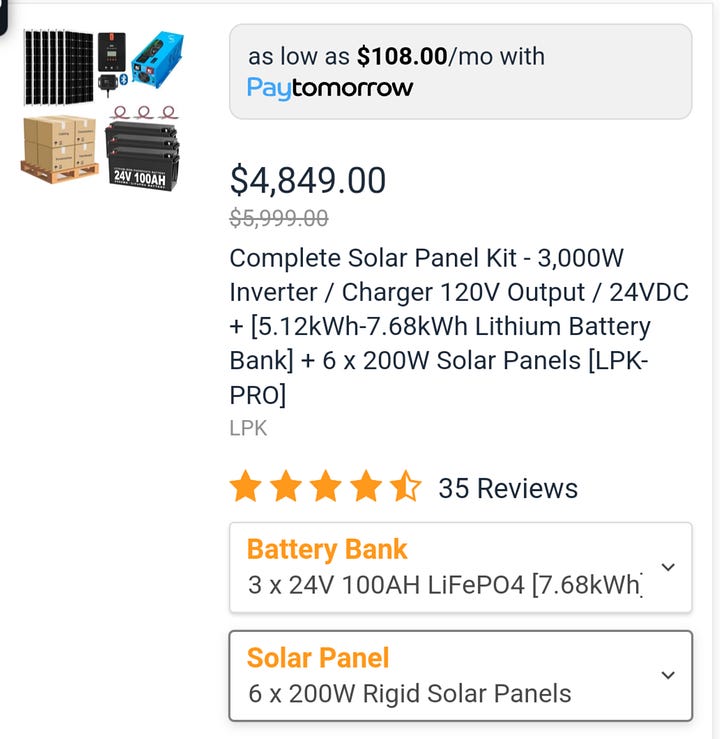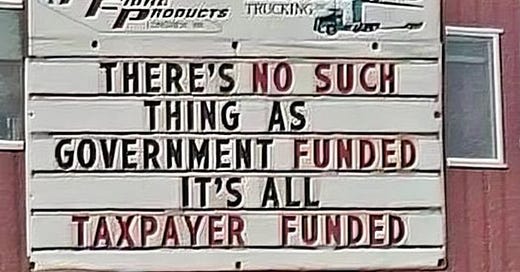Real Freedom Has Become Affordable.
If your idea of freedom includes never again paying rent or utility bills, take a look at this...
The Cost Of Freedom.
In order to calculate exactly what it costs to break away from consumerism, and a lifetime of rent, utility payments, and grocery bills, we have to factor in a few things.
A Location
A type of home
Renewable Energy
Sustainable Food
The location is probably the easiest thing to find, there are 2 features to look for specifically. The first, is the state laws on homesteading where you intend to move. Many states do not have very friendly laws for those that wish to live off the grid. The best states to do this in, at least in my opinion, are Tennessee, Kentucky, Colorado, Arkansas, Texas, Virginia, Montana, and Alaska, mainly this is because of their building, and permitting laws, or in some cases a lack of them. Other than that, the zoning of that land is also crucial to your choice. Look for property with agricultural zoning. Not only are there far less building restrictions, but you can also farm and raise livestock. You will want to find the right size of property based on the types of livestock you intend on raising. For instance, you can easily have a dozen chickens, and a handful of pigs on about 2 acres. If you intend on having cattle, you will need at least an acre of grazing land for every 2 cows that you own.
With a budget of $10,000 or less to find a piece of land, there are still thousands of potential properties for you to choose from. My best suggestion for a place to start searching, is called LandModo.com. So for the sake of the article and building a clear picture, we will pick a hypothetical property in Colorado.
This 5 acre parcel for $6,500 is both zoned agricultural, and has no restrictions on building, farming, or keeping livestock. You can choose to start out your homesteading journey with a tow behind camper, a tent, a log cabin kit, or even a shed from home Depot. This property is also ideal for having solar panels, wind turbines, or combination of the two.
The Starter Home… stead.
Using that $6,500 parcel as an example, we can start our planning budget. The next thing you need to factor in is a dwelling. This could either be the cheapest, or most expensive asset on your homestead, depending on your choice. The cheapest option, is free. Yes, you read that correctly, and you can find a livable dwelling for absolutely free. Just looking into sources like Facebook marketplace, or the local news paper there are often campers being given away for free.


The free camper, or free RV option, isn't the right choice for everyone. Fortunately the options in this field are nearly endless, and only limited by a person's budget, and imagination. For the sake of building a budgeted plan, we will choose a free camper, and just say it had a flat tire that had to be fixed, before it got towed to the property. We will call the tire and tow truck fee an additional $1,000, that's a hypothetical $200 for the tire, and $800 to have it dropped off.
You Have The Power.
Bringing our land and dwelling to a grand total of $7,500 so far. The next step is figuring out how much power you need in order to run your home. You will need to factor in the larger appliances you plan on running in order to do this. To have an electric refrigerator, and a small window unit air conditioner, you will need to have at least a 24v setup, with 3,500 kwh, this should give you plenty of storage. With a quick search, and then some time watching video DIY installations and reviews of these systems, you can quite easily find an affordable setup that is the right size for you.


These kits are priced here as do it yourself, as far as the set up. It is an easy installation for any capable homesteader. The option for installation will often be quite pricey, with the cheaper kits like the ones above, it can easily surpass the cost of the kit. They make them as easy on the homesteader as possible to set up, and are engineered for simple continued use. So let's call that an additional $5,000 for power, on top of our land at $6,500, and a Free camper for $1,000. This brings our grand total to $12,500 so far, and now it's time to look at renewable food.
The Meat and Potatoes of the Situation.
So far you have left the city and suburbs behind, and now you own a piece of land, plus have your own home. That means no more rent, on top of never paying another electric bill. Congratulations, the real fun, and freedom begins right now.
Okay so that celebration is over, now let's get rid of those pesky grocery bills. This is where your personal taste comes into play, literally. Let's say you want fresh veggies year round. But you aren't a vegetarian so you also need some renewable protein. With a good supply of chickens, you get meat and eggs. I have found that about a dozen, with a rooster is a good starting number for a family of 3 - 4 people.
If you have 12 hens, and a good breeding rooster, you only want to give him access to 2 of his ladies at a time. This leaves 10 of the hens laying unfertilized eggs that you can eat. The 2 hens that lay fertilized eggs with chicks, will keep your supply of new chickens refreshed.
You can find baby chicks for a few dollars each at most Tractor Supply™ locations, or my preference is to obtain young layers from local farmers. This will usually cost you anywhere between $10 to $30 per bird if they are a few months old. Finding them is as easy as “googling” the term, “chickens for sale near me.”
Finding some pigs to breed and raise, is done very much the same way. With them however, we do have the option of live trapping. The wild hogs in America are rampant in most states. They are even considered pests in many of them, because of the damage they do to farms. A steel hog trap is cheap, and will easily provide you with a few pigs to start breeding. If this is your choice, I must recommend giving the wild pigs a schedule of antiparasitic, and also deworming medications.
When we add the price of 2 greenhouses, a year of heirloom starter seeds, a good henhouse, the posts and fence segments for the chicken run, and the pigs pen, the grand total is still only about $1,400. So let's add 12 chickens, and 4 pigs, with 6 months of corn feed for them, that's another $890, so let's just call it $900 even for the sake of easy math. That's $1,300 for the animals and their pens, plus the greenhouses and seeds.
Add the previous $12,500 from the land, camper, and solar set up, to the one time $1,300 cost from the renewable food replacement. That is a whopping total of $13,800. You have no more large recurring bills, and it probably costs less that a whole year of rent where you were previously living.
Spend $1,200 on a saw mill from harbor freight, it brings the total to an even $15,000 and gives you access to lumber in any size that you can cut it. Lumber is a homesteaders best friend.
I hope you had fun leaving the cities and suburbs behind, and enjoyed the article.
Thank you for reading, and please do scroll all the way down, and Poke the left eye out of the like button 💚, with the ferocity of Paul Bunyan splitting lumber. 💪😁 🪵 🪓 👁️
Links and Sources :
Landmodo : Find Land Without a Middleman. https://www.landmodo.com/properties?q=Homestead+&price=
Free, or Cheap Homestead Startups.
Free RV’s on Facebook: https://m.facebook.com/groups/freerv/
Continued…
https://m.facebook.com/groups/freecampersmobilehomestrailers/
Renewable Energy Options.
Affordable Solar Kits - https://shopsolarkits.com/collections/solar-power-systems
Wind Kits - https://windandsolar.com/shop/wind-turbine-products/wind-turbine-kits
Food, because why constantly pay for it.
Large Greenhouse - 26'x10'x6.5' Greenhouse Heavy Duty Large Greenhouse. https://a.co/d/76j7BYE







You forgot about water. Wells can get pretty expensive to drill. Ideally you would want your well close to your living dwelling. Waste is another thing, septic systems and grey water systems have an expense too.
You can collect rain water but you can't rely on that. I have heard of people having potable water trucked in and held in a large storage tank. That would be an expense every time you had to have it filled.